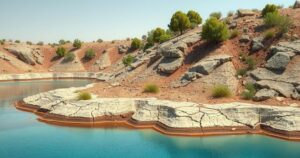Research Discredits Claims of Iran Earthquake Being Triggered by Nuclear Test

A recent study disproves the theory that a 4.5 magnitude earthquake in Iran was caused by a nuclear test. The research identified natural seismic activity as the event’s cause and warned against the rapid spread of misinformation. Dr. Benjamin Fernando emphasized the misinformation’s geopolitical implications, advocating for effective communication and collaboration among scientists to counteract false narratives.
Recent research indicates that a 4.5 magnitude earthquake in Iran was not caused by a nuclear test, as some speculated. The study published in the journal Seismica particularly highlighted misinformation circulating on social media in October 2024, coinciding with heightened tensions in the Middle East. It cautioned about the consequences of misrepresenting scientific data during international crises.
Dr. Benjamin Fernando, a seismologist at Johns Hopkins University and lead author of the study, emphasized the prevalence of a misinformation campaign surrounding the earthquake incident, which highlighted the significant impact of geophysical data in geopolitical tensions. The earthquake, which took place on October 5, 2024, near Semnan, Iran, was attributed to natural seismic activity in a seismically prone area.
After analyzing seismic signals, Dr. Fernando’s team found that the earthquake was linked to a gently sloping fault caused by tectonic movements between the Arabian and Eurasian plates. They affirmed that the characteristics of the seismic waves indicated natural causes, differing from the explosive signatures typical of nuclear tests, further reinforcing the absence of any nuclear connection.
Historical seismic data corroborates their findings, as similar earthquakes occurred in the region in 2015 and 2018, unrelated to nuclear activities. Despite this evidence, misinformation regarding a nuclear test spread rapidly on social media shortly after the quake, with the first suggestions appearing within 27 minutes of the event, fueled by incorrect seismic data interpretation.
The study revealed that this false narrative quickly transitioned from social media to various news outlets, with Indian media being particularly prominent in spreading the misinformation. Reports from the UK, USA, Israel, Pakistan, Zimbabwe, and France also perpetuated the claims without proper verification.
The researchers advocated for improved collaboration among seismologists to counter misinformation effectively and recommended that scientific agencies promptly issue accurate reports in response to disinformation. Dr. Saman Karimi, co-author of the study, stated that partnership between verified scientific accounts and social media platforms could help mitigate misleading narratives surrounding seismic events.
Earthquakes are common in seismically active regions such as northern Iran. Understanding their origins through scientific data is crucial, especially when allegations arise claiming manmade triggers. The potential for misinformation during times of geopolitical tension poses significant risks, especially when scientific interpretations are misconstrued or manipulated. This research underscores the importance of accurate data interpretation and the need for responsible dissemination of information regarding seismic activities.
In summary, the comprehensive study refutes claims linking the Iran earthquake to a nuclear test, asserting that it stemmed from natural tectonic activity. The rapid spread of misinformation and the impact of social media on public perception highlight the necessity for proactive engagement among scientific communities to correct misconceptions. Collaborative efforts between scientific organizations and media platforms are crucial to ensure accurate information reaches the public effectively.
Original Source: www.insidenova.com






